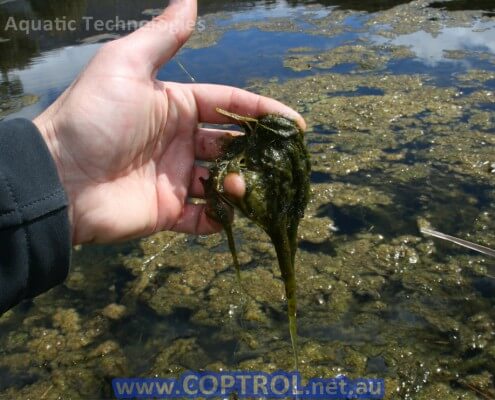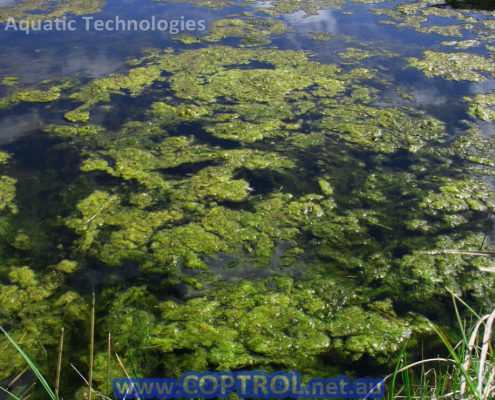Different types of algae
The term algal blooms may be used to describe macroalgae, which are large visible free floating or rooted plants, or microalgae which require a microscope to see but in mass are highly visible as a green layer on the water’s surface (best described here).
Algae are generally microscopic organisms and usually thought of as simple aquatic plants which do not have roots, stems or leaves and have primitive methods of reproduction. They are carbon fixing and oxygenating organisms. However, some algae display primitive animal features such as motility, while blue-green algae differ markedly from plants and all other algae, in that they have a cellular structure and function that is more common to bacteria than to the plant kingdom.
Algae live in a wide range of aquatic environments and are a natural component of most aquatic ecosystems. Additionally, a great many are also terrestrial, living in soil, snow or in association with other organisms, especially fungi (as lichens) and animals. Aquatic algae are found in both fresh and marine waters. They range in size from large kelp (metres in length) to those visible only under a microscope.
Algae, while looking unsightly, can trap litter & sediment, reduce the holding capacity of a dam or cause smells and scum whilst decaying. Algal blooms may deplete oxygen concentrations in water which can smother fish, animals or plant life. Floating algal masses can asphyxiate rice crops and prevent young plants from emerging. In certain conditions, cyanobacteria may form dense blooms, which may produce toxins that make seafood poisonous to humans. Even if the cyanobacteria do not produce toxins, blooms can cause water to have an unpleasant taste and odour. Algae has been known to block pipes, siphon tubes, irrigation channels and pumps, severely impeding water flow.
Certain blue-green algal blooms are toxic and can cause a rash known as swimmer’s itch, while powerful neuromuscular toxins released by other cyanobacteria can kill fish living in the water or the animals that drink it.
In certain conditions, cyanobacteria may form dense blooms, which may produce toxins that make seafood poisonous to humans. Even if the cyanobacteria do not produce toxins, blooms can cause water to have an unpleasant taste and odour.













